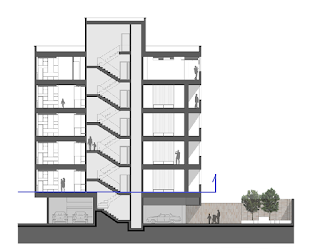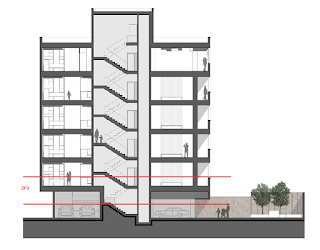The ASCE Library defines importance factor as
" A function of the Risk Category, with the primary use of determination of design lateral forces. "
However, the true purpose of the importance factor is to provide an additional strength for risk-critical facilities. The more important facilities are to be designed with an increased value of the seismic design coefficients of the ordinary structures by a certain factor.
NSCP has categorized buildings into 5 groups:
1. CATEGORY I: ESSENTIAL FACILITIES
These are facilities or structures which are necessary to remain operational or could be restored quickly after struck by an earthquake for people to respond effectively.
These structures are necessary for emergency response and must not just survive a major earthquake, but should also be able to function at full efficiency even right after a disaster. These structures should be designed and located, constructed in a way that they can continue to function immediately after or during a major earthquake.
Essential facilities consist the following:
- Emergency communications. Emergency operations centers must be able to detect and determine the most serious problems and respond by quickly dispatching response teams for rescue, fire fighting, medical care, etc.
- Hospitals. Hospitals in a region must operate at maximum capacity in times of major disasters. Any damage of the building or to equipment and supplies can impair medical response to an emergency.
- Emergency response facilities. Structures which should have the ability to provide immediate response during a disaster. Examples are ambulance services, police stations, emergency operation centers, and fire stations.
- Catastrophic failures. Structures which can worsen the situation during a disaster, such as failure of a large dam or a nuclear power plant.
- Transportation and communication. Collapsed buildings and downed electrical lines can block and bring serious damage to the transportation and communication networks. These networks are necessary for delivery of aid, doctors,rescue workers, food, etc.
- Utilities. Lifeline systems which provide, water, fuel, electricity, sewers and communication and transportation to the community.
- Designated evacuation centers. Structures housing evacuees after a disaster. This includes public school buildings which are always used as evacuation centers.
2. CATEGORY II. HAZARDOUS/CRITICAL FACILITIES
These facilities include all man-mad structures or their improvements which may pose potential threats or cause serious bodily harm, extensive damage to property, disruption of socioeconomic activities if damaged.
Some of these structures, building or non-building, support or house toxic and explosive substances.
3. CATEGORY III. SPECIAL OCCUPANCY STRUCTURES
Structures with high population such as enumerated below:
- Structures for public assembly with capacity of more than 1,000 persons.
- Schools with 250-student capacity which are not categorized as evacuation centers. Also included are educational buildings such as libraries, museums, auditoriums with more than 300 occupants.
- Adult education schools like colleges with more than 500 students.
- Medical facilities such as mental hospitals.
- Detention facilities like jails.
- Churches, mosques, and religious facilities.
- Other structures and equipment in power-generating stations, and utility facilities not under category I.
4. CATEGORY IV. STANDARD OCCUPANCY STRUCTURES
Structures not having functions as stated previously. Residential housing falls under this category.
5. CATEGORY V. LOW-RISK STRUCTURES
Structures which exhibit low risk to human life and property in any event of failure. Examples are agricultural buildings, temporary facilities, boundary walls, minor storage facilities, construction facilities, private garages, carports, sheds, and fences.
| OCCUPANCY CATEGORY | SEISMIC IMPORTANCE FACTOR, I |
|---|
| I. Essential facilities | 1.50 |
| II. Hazardous facilities | 1.25 |
| III. Special Occupancy facilities | 1.00 |
| IV. STandard Occupancy facilties | 1.00 |
| V. Low Risk Structures | 1.00 |
RELATED ARTICLES:


